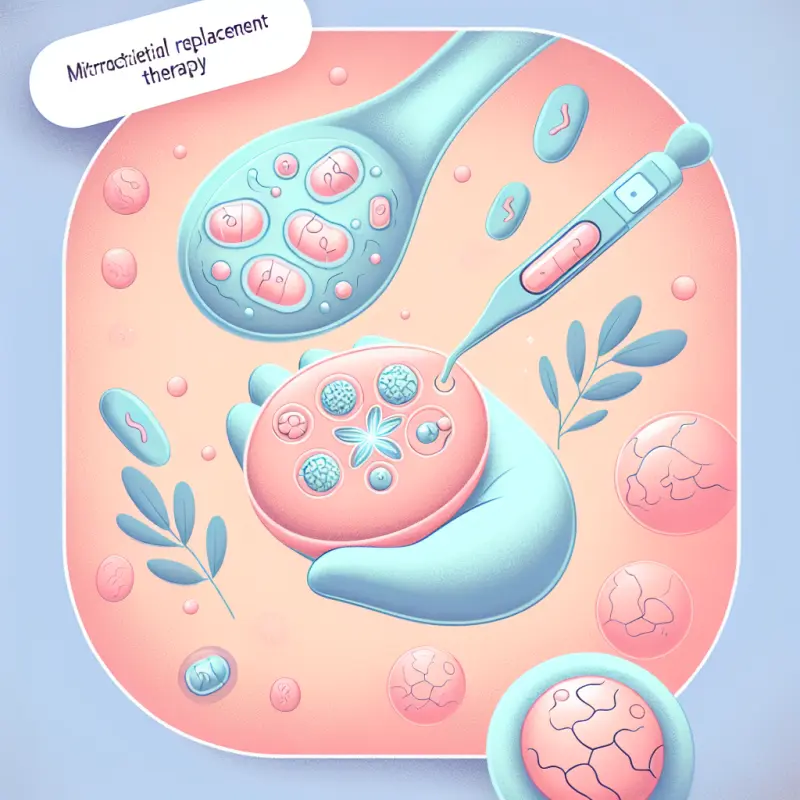Mitochondrial Replacement Therapy: Emerging Fertility Treatments

Mitochondrial Replacement Therapy: Emerging Fertility Treatments
Introduction
Mitochondrial Replacement Therapy (MRT) is a groundbreaking technique that has emerged at the intersection of reproductive medicine and genetics. As scientists and medical professionals seek to combat mitochondrial diseases and enhance fertility options, MRT offers a novel approach that could revolutionize the field. This blog aims to explore the intricacies of MRT, its potential applications, ethical considerations, and the future landscape of fertility treatments.
Mitochondrial diseases are genetic disorders caused by dysfunctional mitochondria, the energy-producing organelles in our cells. These conditions can lead to severe health issues, affecting organs with high energy demands such as the brain, heart, and muscles. Since mitochondria are inherited maternally, MRT offers hope by enabling women with mitochondrial diseases to give birth to healthy, genetically related children.
Understanding Mitochondrial Diseases
Mitochondrial diseases affect approximately 1 in 5,000 individuals worldwide. These diseases result from mutations in mitochondrial DNA (mtDNA) or nuclear DNA that impacts mitochondrial function. The symptoms are diverse and can include:
- Neurological deficits: Seizures, developmental delays, and muscle weakness.
- Cardiac problems: Cardiomyopathy and arrhythmias.
- Metabolic disorders: Diabetes and lactic acidosis.
- Vision and hearing loss: Progressive degeneration leading to blindness or deafness.
Current Treatment Options
Currently, there is no cure for mitochondrial diseases, and treatments are largely supportive and symptomatic:
- Medications: To manage symptoms like seizures and heart problems.
- Dietary supplements: Such as Coenzyme Q10, to support mitochondrial function.
- Physical therapy: To help maintain muscle function and mobility.
The limited efficacy of these treatments underscores the need for innovative solutions like MRT.
Mechanisms of Mitochondrial Replacement Therapy
MRT involves replacing defective mitochondria in a woman's egg with healthy mitochondria from a donor, creating an embryo with three genetic contributors:
- Nuclear DNA from the parents: Providing the majority of genetic information.
- Healthy mtDNA from a donor: Ensuring functional mitochondria.
Techniques of MRT
There are primarily two techniques for MRT:
1. Maternal Spindle Transfer (MST)
- Process: Involves removing the nuclear DNA from the mother's egg and transferring it into a donor egg that has had its nuclear DNA removed but retains healthy mitochondria.
- Fertilization: The reconstructed egg is then fertilized with the father's sperm.
2. Pronuclear Transfer (PNT)
- Process: This technique takes place post-fertilization. Both the mother’s and donor's eggs are fertilized, and the pronuclei (which contain the nuclear DNA) from the mother's fertilized egg are transferred to the donor's fertilized egg, which contains healthy mitochondria.
- Development: The resulting embryo is then implanted into the mother's uterus.
Potential Benefits of MRT
Reducing Mitochondrial Disease Transmission
MRT offers the possibility of significantly reducing the risk of passing on mitochondrial diseases. By using healthy donor mitochondria, the likelihood of mitochondrial dysfunction is minimized, offering hope to families with a history of these conditions.
Expanding Reproductive Options
For women with known mitochondrial disorders, MRT provides an opportunity to have genetically related children without the fear of transmitting debilitating diseases. This advancement could also potentially enhance fertility in older women, where mitochondrial dysfunction is a contributing factor to infertility.
Ethical Considerations and Challenges
The introduction of MRT into clinical practice raises several ethical, legal, and social questions:
Genetic Modification Concerns
- Germline Alteration: MRT involves changes to the germline, meaning the modifications are heritable. This has sparked debates about the long-term implications for future generations.
- "Three-Parent" Babies: The concept of a child with three genetic contributors challenges traditional notions of parenthood and raises questions about identity and consent.
Regulatory and Legal Hurdles
- Legislation: Different countries have varying stances on MRT. For example, the UK has approved the use of MRT under strict regulations, while the US has not yet sanctioned its clinical use.
- Oversight: Establishing international guidelines and monitoring mechanisms is crucial to ensure ethical practices and prevent misuse.
Social Implications
- Access and Equity: MRT is a costly procedure, raising concerns about equitable access for all socio-economic groups.
- Cultural and Religious Views: Diverse perspectives on genetic intervention may influence the acceptance and uptake of MRT across different societies.
The Future of MRT and Fertility Treatments
The future of MRT is promising, with ongoing research and clinical trials aimed at refining techniques and expanding applications. Key areas of focus include:
Improving Techniques and Outcomes
- Efficiency: Enhancing the success rates of MRT procedures through technological advancements.
- Safety: Long-term studies to monitor the health and development of children born through MRT.
Expanding Applications
- Male Infertility: Research is exploring the potential of MRT to address certain types of male infertility linked to mitochondrial dysfunction.
- Age-Related Infertility: As women age, mitochondrial quality declines, contributing to decreased fertility. MRT could offer a solution by rejuvenating eggs with healthy mitochondria.
Global Collaboration and Policy Development
- International Cooperation: Collaborative research efforts and policy frameworks are needed to harmonize practices and share knowledge.
- Public Engagement: Educating the public about MRT and involving diverse stakeholders in discussions to shape future directions.
Conclusion
Mitochondrial Replacement Therapy represents a pivotal advance in reproductive medicine, offering hope to those affected by mitochondrial diseases and expanding fertility options. While the technology holds immense promise, it is accompanied by ethical, legal, and social challenges that must be carefully navigated. As research progresses and global dialogue continues, MRT could redefine the landscape of fertility treatments, providing new pathways for individuals and families seeking to overcome genetic barriers to parenthood.
Through informed policy-making, ethical oversight, and public engagement, the potential of MRT can be harnessed responsibly, paving the way for healthier generations and a brighter future in reproductive health.